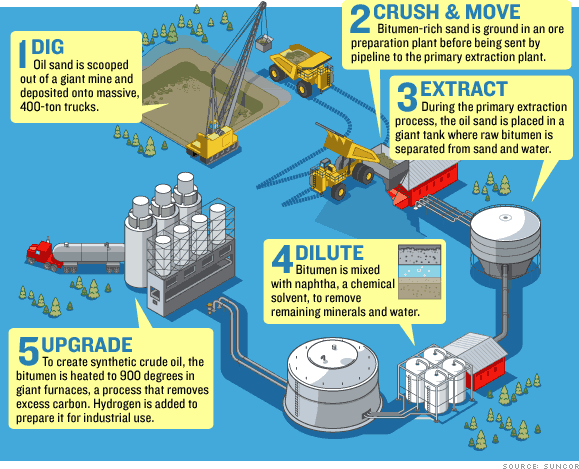|
NEW YORK (BUSINESS 2.0) - According to the International Energy Agency, oil production is declining in 33 of the 48 largest oil-producing nations.
But thanks to a 27,000-square mile swath of largely untapped deposits in northern Alberta, Canada won't face that problem for decades. In fact, with an estimated 175 billion barrels of accessible oil buried in the tarlike sands scattered throughout the frigid region, Canada sits atop one of the largest known oil reserves in the world, two-thirds the size of Saudi Arabia's estimated 263 billion barrels.
But extracting the bitumen -- a gooey, viscous form of petroleum that can be further refined to produce a synthetic form of crude oil -- from the Albertan sands is a costly and environmentally punishing process. First the oil sand is dug out of the earth in a massive strip mine using 30-foot-high dump trucks. The sand is then crushed and separated in huge extraction plants before being diluted with naphtha, a highly toxic and flammable liquid that thins out the raw bitumen.
The pricey equipment and laborious process cost the producers roughly $20 per barrel of crude, despite recent technological advances.
When oil prices hovered around $25 a barrel, as they did for much of the past decade, oil sands projects were considered prohibitively expensive. Suncor extracted crude oil from the Albertan sands 35 years ago, but it wasn't until recently, when oil prices spent months above $60 a barrel, that oil sands became one of the petroleum industry's most important targets.
"The current prices have moved projects from the possible to the probable column very quickly," says Suncor spokesman Brad Bellows. The oil sands region of Alberta already produces nearly 1 million barrels a day, a figure expected to double in the next five years.


Next: Intelligent wells
|